Oyster farming: Why the pearl in NC's agriculture industry is running into choppy waters
For an industry that brings so many environmental benefits and economic promise, North Carolina's oyster farmers have been facing some major headwinds.
Some come with the territory, namely working on the water. But others are the result of the growing popularity − some would say too much love − of North Carolina's coastal waters.
And then there's even the more basic question of whether oyster farmers should be considered farmers, like their land-based brethren that grow soybeans and raise hogs, when it comes to rules and regulations.
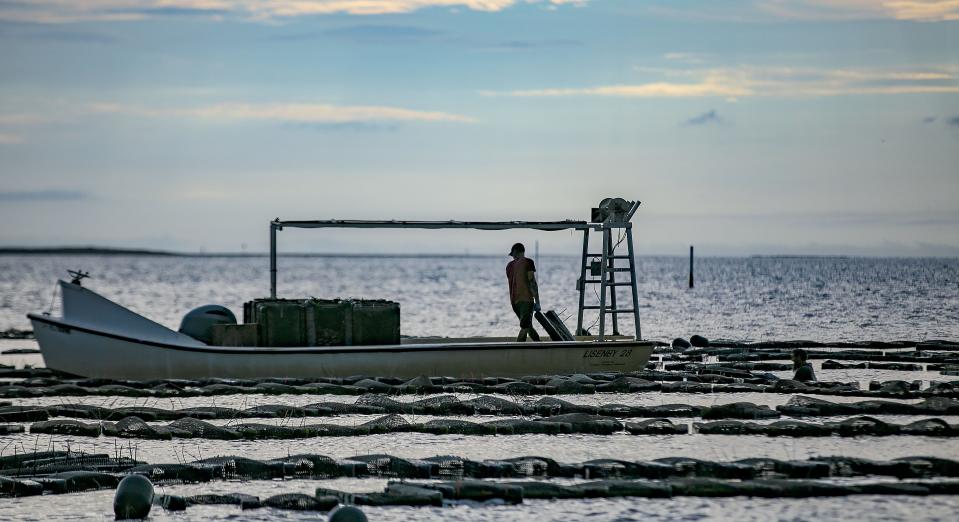
"People love the idea of oyster aquaculture and all the benefits it brings," said Chris Matteo, president of the N.C. Shellfish Growers Association. "But they just don't want to see it or smell it."
Wind, water and ... what is that?
Matteo runs Chadwick Creek Oysters and Seed Nursery in Bayboro near New Bern. Ten years ago, he decided to make a geographic and career change and move from a finance job in the Triangle to farming oysters in Pamlico County.
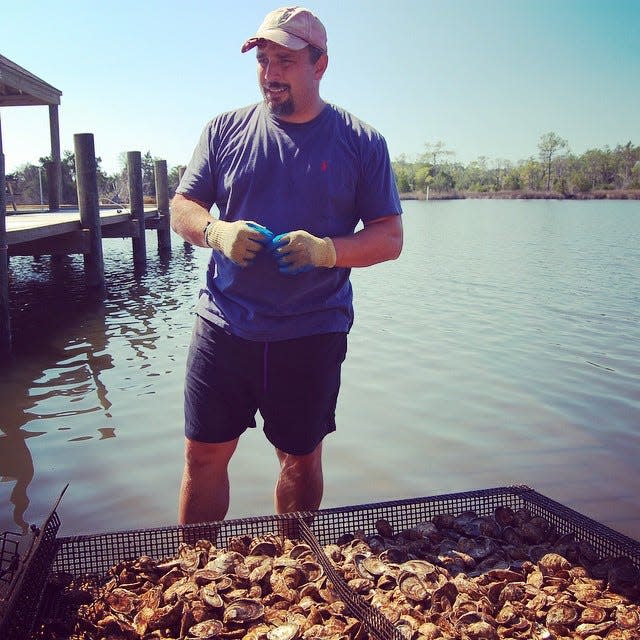
Matteo said he knew working on the water would mean facing the vagaries of Mother Nature from time to time, including hurricanes bringing too much wind and water into coastal waters to recent droughts not bringing enough freshwater flowing into the sounds and rivers. Hurricane Florence in 2018, for example, hampered farmers' supply by flooding estuaries with too much fresh water, reducing salinity and dissolved oxygen levels and killing lots of baby oysters.
"We have all of the challenges of farming on land, but we're doing it on a moving environment that has a ton of more issues than just how good is the soil," he said.
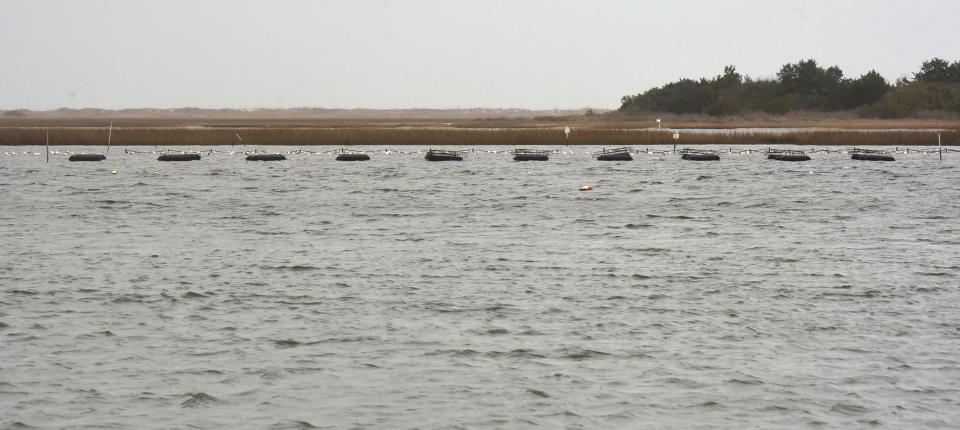
Then the COVID-19 pandemic choked of demand for oysters as restaurants and bars were forced to close.
"Oyster farmers are a resilient bunch, but that was a lot to take in a short period of time," Matteo said
But, he added, farmers can deal with and somewhat plan for those impacts − although climate change is likely to make North Carolina's famous weather extremes even more damaging. What is harder to deal with are changing attitudes among residents and local officials.
SUPER STORMS Learning from Hurricane Ian: Why we should prepare for more storms like it
"I used to think hurricanes were our biggest challenge," Matteo said. "Now I think it's the NIMBY (not-in-my-backyard) mindset."
For years oyster farming was a very small and niche industry with a handful of farmers working public waters well away from most populated and popular coastal areas. Along with generating jobs, income and a tasty food, oyster farms also helped improve local water quality − a major goal of environmentalists and state officials.
The farms also has a secondary impact of helping jumpstart the recovery of nearby wild oyster populations, since spat from the farms would often help repopulate nearby areas.
BUILDING SMARTERLooking to plug 'leaky' homes, NC wants to put a major dent in home energy costs
But as the coast's population has grown, and formerly quiet waterfront areas are being developed to meet the surging interest in coastal living, so has the interest in oyster farming to meet the growing demand for oysters, clams and other seafood.
Matteo said he expects the farm-raised shellfish market to grow to be a $10 million industry by the end of this year, with a goal of reaching $100 million by 2030. Today, the state has roughly 220 shellfish growers with 448 leases on 1,828 acres of public waters, according to the N.C. Division of Marine Fisheries.
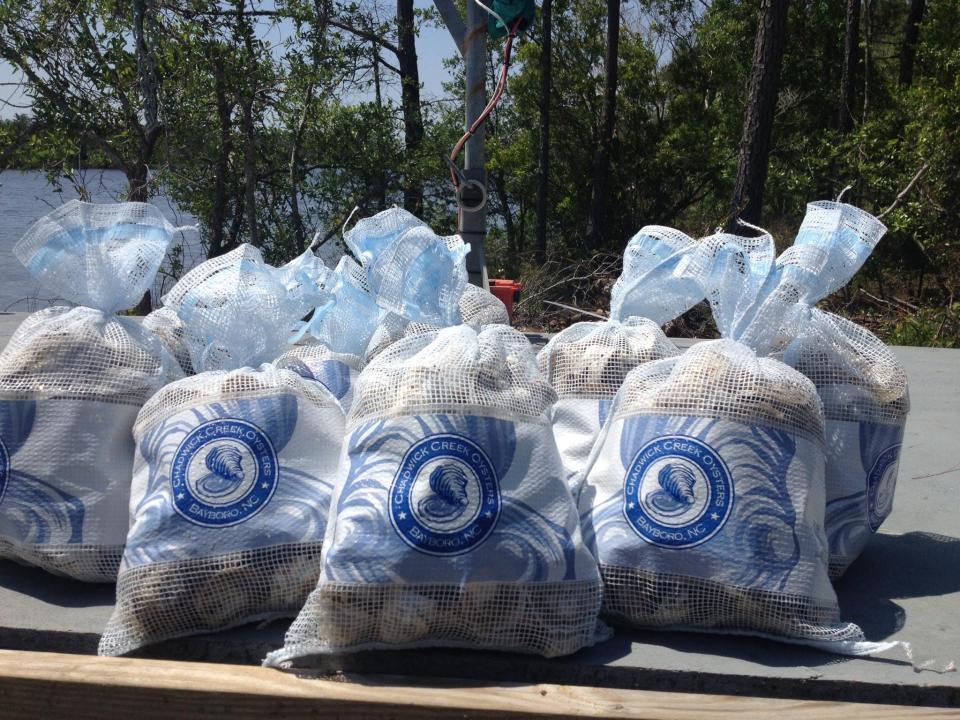
"It's a bigger footprint, so naturally people start seeing it more and start to worry, and we understand that," Matteo said.
Fights over oyster farm leases have spilled over into the public realm in recent years, with some coastal residents and even local officials pushing to get oyster farmers' cages and poles removed from near their expensive waterfront homes and moratoriums on future leases.
Spats in recent years include very public ones over oyster farms in Masonboro Sound in New Hanover County and Bogue Sound in Carteret County. The pressure resulted in state legislators including moratoriums on new shellfish leases in those parts of both counties included, ironically, in a 2019 bill aimed at promoting the shellfish aquaculture industry at the coast. The bans were set to expire in July 2021, but were extended in 2020 until July 2026. A moratorium on oyster farms in Brunswick County, driven by public opposition, was adopted by the N.C. General Assembly in 1949.
STAY CONNECTED: Keep up with the area’s latest development news by following our Growth and Development page on Facebook.
A 2020 report by the N.C. Division of Marine Fisheries reviewing whether areas impacted by moratoriums could support shellfish farms hinted that it was concerns over aesthetics that was driving a lot of the opposition to new leases.
"Many user conflict cases brought by riparian owners adjacent to shellfish lease locations seem to be driven by a concern for viewshed," the report stated. "Viewshed is not a public trust right traditionally acknowledged under North Carolina common law."
Matteo said the opposition to new leases have snowballed in recent years, and that's creating real and perceived barriers for growing the industry and attracting new entrants.
"People are now coming at us out of fear when they don't really know what's going on, and that's unfortunate," he said, ticking off all the benefits rebuilding the state's battered oyster population can bring to the coast. "I know a lot of people would like to see us just go out into the middle of Pamlico Sound where we can't be seen, but that's just not practical."
'Something that's reasonable'
It's not just the murky waters of the state's extensive inland waterways that oyster farmers need to navigate. The regulatory environment is one that can be just as turbulent.
Because oyster farms touch so many areas, a host of federal and state agencies have some oversight authority over them. That includes the Army Corps of Engineers, the U.S. and N.C. Agriculture departments, and the N.C. Division of Marine Fisheries.
"It's incredible the amount of hoops we have to jump through to do what we do," Matteo said. “We’re sort of the red-headed stepchild of the departments of Agriculture and Fisheries.”
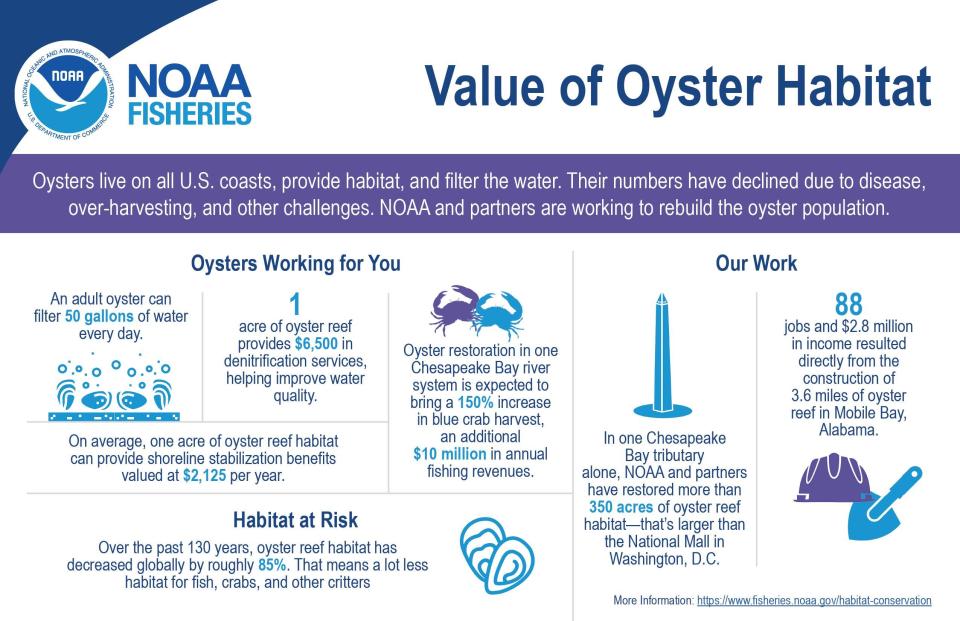
That list also includes the N.C. Division of Coastal Management, which oversees development in the state's 20 coastal counties. Shellfish farmers need to secure a permit from the agency to place their farming structures and equipment in public trust waters, similar to the requirement for building a deck or pier. But Matteo says the process to secure a major Coastal Area Management Act (CAMA) permit can be lengthy and complicated, and, in his opinion, should be much simpler since shellfish farming should be treated as an agricultural use and exempt from many of the requirements.
"We're not looking for carte blanche, to be unregulated," Matteo said, adding that shellfish growers might seek help from state legislators if the regulatory burden grows too great. "We just want something that's reasonable."
Thursday the N.C. Coastal Resources Commission, which adopts rules and policies for coastal development, discussed the agency's regulation of oyster farms at its quarterly meeting in Ocean Isle Beach. The commission didn't take any action.
Same, but different
Which brings us to the question of whether oyster farmers are, well, farmers.
"When you buy seed, plant something, grow it and harvest it, whether in the ground or in a pot or hydroponically or in the estuary, it's the same thing," Matteo said. "You’re not pulling from the wild.”
GRAPE NEWS!Muscadine mania: Why NC's native grape could soon be making an appearance in local schools
He added that the IRS classifies oyster farmers as farmers, the U.S. Department of Agriculture is considering whether to provide shellfish farmers federal crop insurance, and that the N.C. Department of Agriculture and Consumer Services counts their "crops" as part of the state's rich agricultural bounty and helps market the farms and their oysters through its agritourism efforts. The N.C. Farm Bureau, which advocates for farms and rural families, also has backed oyster farmers.
But there's one obvious way oyster farmers are different from more traditional farmers.
“Other farmers can adjust accordingly if they have pushback," Matteo said. "We can’t. We are a water-dependent farming practice.”
Reporter Gareth McGrath can be reached at GMcGrath@Gannett.com or @GarethMcGrathSN on Twitter. This story was produced with financial support from 1Earth Fund and the Prentice Foundation. The USA TODAY Network maintains full editorial control of the work.
This article originally appeared on Wilmington StarNews: NC oyster farmers treading water as NIMBY attitudes, regulations bite

